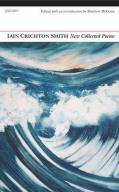The New Economics Foundation inaugural Happy Planet Index of 2006 studied 178 nations and determined the inhabitants of Vanuatu's archipelago to be the "Happiest People on Earth." Yet, the Tannese's daily confrontation with contemporary changes in cultural, economic and climate stability threaten the traditions of village life. Such changes have fueled investigation of modern society and culture. Through Art, we hope to engage this curiosity born of necessity on Tanna and meet it with our own desire to know and value their way of life.
Want to Help Develop a Culture and Climate-Sensitive Project?
The Tanna Center for the Arts proposes to foster an equal exchange of ideas and activities between the cultures of Oceania and the international arts community while working to rebuild a local living economy that retains youth and Traditional Ecological Knowledge (TEK).
Founder's Statement

Oceania is a huge area of the South Pacific that contains myriad cultures which predate most of the civilizations of the rest of the world. It's region is a quilt of radically different cultures and ethnicities. And that's what drew me.
One afternoon I met one of the region's respected figures, Isso Kapum, and his father, Jack Kapum, who is Chief of the Naihné on Tanna. They invited me to become a 'Tanna-Man.' I ended up hanging out with several local i.e. 'tribal' groups on the island and was really blown away by their warmth, friendliness and wisdom. The Ni-Vanuatans have consistently been described as the "happiest people on Earth." If you come check out their islands, you can see why.
I felt that a lot of people in Asia, Africa, South America, the US and Europe never get a chance to see something like the beauty of Vanuatu, so I decided to open up a retreat on part of the property. I hope you can join us as we begin to set up this project, and watch it evolve from an idea to a fully functional, high tech artist retreat and center for the arts in one of the most beautiful parts of the South Pacific.
Help us set this artist retreat up!
In peace,
Paul D. Miller aka DJ Spooky, NY 2010


































